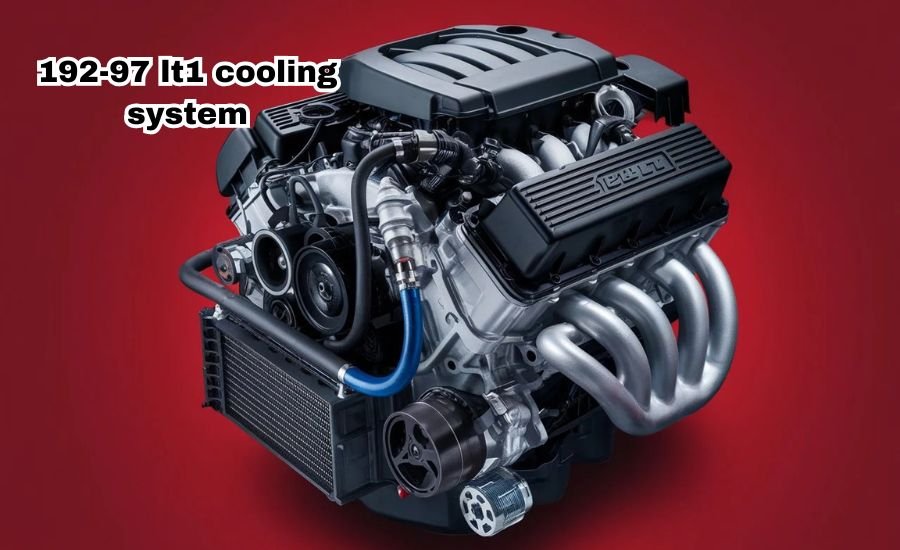The 192-97 LT1 cooling system is essential for keeping your engine running smoothly. This cooling system helps prevent the engine from overheating, which can cause severe damage. If you own a vehicle with a LT1 engine, it’s important to know how this system works and how to take care of it. Understanding its features can help you avoid common problems that might arise.
A well functioning 192-97 LT1 cooling system ensures your engine performs at its best. By using special parts like a water pump, radiator, and thermostat, this system helps maintain the right temperature for the engine. When everything works together, you can enjoy a powerful and reliable driving experience. Proper maintenance can also extend the life of your engine and enhance its performance. Regular checks and timely repairs can save you from costly fixes later on. Let’s dive deeper into its features and how to keep it in great shape!
What is the 192-97 LT1 Cooling System?
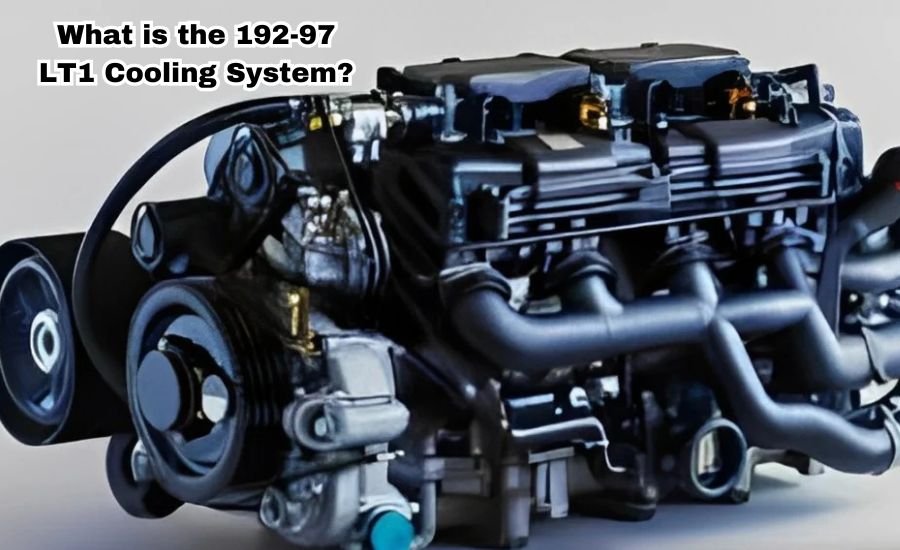
The 192-97 LT1 cooling system is an important part of the LT1 engine used in many cars from the 1990s. It helps keep the engine cool by managing the heat produced while the car is running. When the engine operates, it creates a lot of heat, and without a good cooling system, it can overheat. The cooling system makes sure the engine stays at the right temperature for optimal performance. This is crucial for maintaining engine longevity and ensuring efficient operation.
Inside the 192-97 LT1 cooling system, you will find parts like the water pump, radiator, and thermostat. Each part has its specific role to play. The water pump pushes coolant into the engine. The radiator cools down the hot coolant before it goes back to the engine. Together, these parts keep everything running smoothly and efficiently. Understanding how these components work together is essential for any car owner who wants to maintain their vehicle properly.
Key Features of the 192-97 LT1 Cooling System
One of the best features of the 192-97 LT1 cooling system is its reverse flow design. This design directs coolant to the cylinder heads before the engine block. It ensures that the hottest parts of the engine get cooled first. This design helps prevent overheating and makes the engine run better. By prioritizing the cooling of critical areas, this system enhances overall engine performance.
Another key feature is the high flow water pump. This pump moves coolant quickly through the system, allowing for better heat management. If the coolant moves faster, it can absorb more heat, helping the engine to stay cool. This efficient flow can lead to improved performance, making your car feel more powerful and responsive on the road. Keeping these features in mind can help you appreciate the technology behind your vehicle’s performance.
Common Problems with the 192-97 LT1 Cooling System
The 192-97 LT1 cooling system can face several common problems. One major issue is water pump failure. If the water pump stops working, the coolant will not flow properly. This can lead to overheating, which can damage the engine if not fixed quickly. Additionally, if the water pump leaks, it can cause a significant loss of coolant, further increasing the risk of overheating.
Another problem can be a faulty thermostat. If the thermostat fails to open or close correctly, it can cause the engine to run too hot or too cold. Additionally, radiators can get clogged with debris over time. Regular checks can help catch these problems before they cause serious engine damage. Knowing these issues can help you take preventive measures to maintain your cooling system effectively.
How to Identify 192-97 LT1 Cooling System Problems
To keep your 192-97 LT1 cooling system in good shape, it’s essential to know how to spot problems. Watch for signs like coolant leaks under the car or a temperature gauge that is too high. If you notice steam coming from under the hood, it might be an overheating issue. Additionally, strange noises from the engine can indicate a failing water pump or other cooling system components.
Checking the coolant level regularly is also important. If you find that the coolant is consistently low, there might be a leak somewhere in the system. Look for puddles of coolant and inspect hoses for cracks. Addressing early symptoms can prevent more serious problems later. Being aware of these indicators can help you keep your vehicle in optimal condition.
Importance of Regular Maintenance for the 192-97 LT1 Cooling System
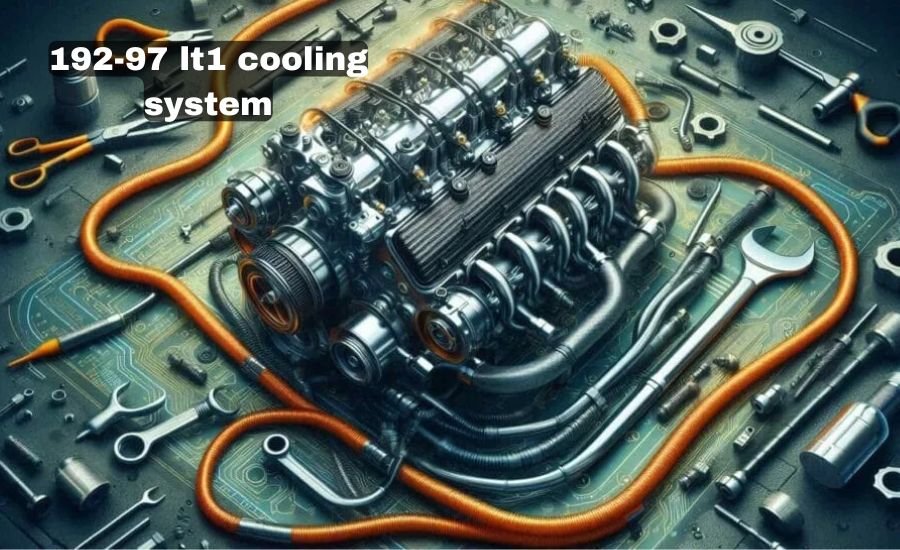
Regular maintenance is crucial for the 192-97 LT1 cooling system. By keeping the system clean and checking its parts, you can avoid many problems. It’s a good idea to flush the coolant every few years or every 30,000 miles. This helps remove dirt and debris that can build up in the system. Ensuring that coolant is fresh can greatly enhance the efficiency of the cooling process.
In addition to flushing, inspect hoses and clamps for wear. A ruptured hose can cause leaks and other problems. Regular maintenance ensures that your cooling system remains efficient. Taking care of the cooling system can save you money in repairs and keep your engine running smoothly. A little effort in maintenance goes a long way in ensuring your vehicle’s longevity and performance.
How to Flush the 192-97 LT1 Cooling System
Flushing the 192-97 LT1 cooling system is a simple process that helps maintain its effectiveness. First, drain the old coolant from the system into the container. After draining, flush the system with clean water to remove any remaining dirt. This step is essential for keeping the system clean and allowing new coolant to work effectively.
Once the flushing is complete, refill the system with fresh coolant. When the engine is cold, first check the coolant tank. Properly flushing and refilling the system can help prevent overheating and extend the life of the cooling system. Regular flushing can keep your engine running well for many miles. Knowing how to do this maintenance task can empower you as a car owner.
Signs of a Failing Thermostat in the 192-97 LT1 Cooling System
The thermostat is a critical part of the 192-97 LT1 cooling system. It controls the flow of coolant depending on the engine temperature. If the thermostat is not functioning correctly, it can lead to overheating or inefficient cooling. Common signs of a failing thermostat include fluctuating temperature readings. If the engine runs too hot or too cold, it might be time to replace the thermostat.
Keeping an eye on temperature gauges can help catch issues early. If you notice the temperature gauge moving erratically, this can be a sign of a faulty thermostat. Regular checks can ensure that your cooling system remains effective. Addressing thermostat issues quickly can save you from more serious problems in the future.
Water Pump Maintenance for the 192-97 LT1 Cooling System
The water pump is vital for the 192-97 LT1 cooling system. It keeps coolant circulating through the engine, radiator, and other parts. To maintain the water pump, regularly check for leaks and unusual noises. If you notice any problems, it’s important to address them quickly to avoid engine damage. Early intervention can prevent minor issues from becoming significant failures.
Replacing the water pump before it fails can save you from more extensive repairs. A good rule is to inspect the pump during regular maintenance. Keeping the water pump in good condition helps ensure that your cooling system operates efficiently and effectively. This best way can save you time and money in the long run.
Choosing the Right Coolant for the 192-97 LT1 Cooling System
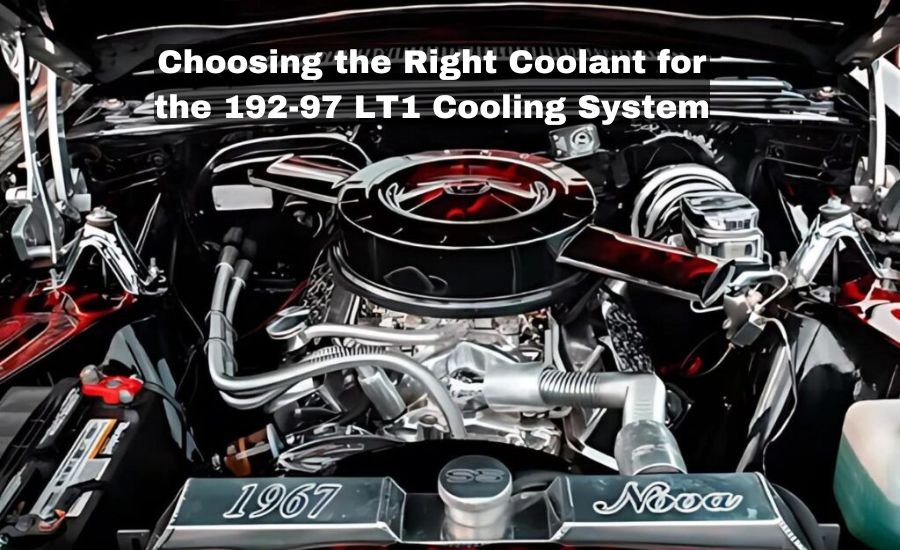
Selecting the right coolant is crucial for the 192-97 LT1 cooling system. Coolant helps keep the engine from overheating and protects it from freezing in cold weather. Always refer to your owner’s manual to find the correct type of coolant for your engine. Choosing the wrong type can lead to poor performance and potential damage to the cooling system.
Different types of coolant are available, including those designed for high performance engines. Using the right coolant ensures that your cooling system operates efficiently. This will help maintain the engine temperature and improve performance on the road. Keeping coolant levels full is key to preventing overheating, which is essential for a healthy engine.
Upgrading the 192-97 LT1 Cooling System
If you want to improve the performance of your 192-97 LT1 cooling system, consider upgrading some components. For example, you can install a high flow water pump or a larger radiator. These upgrades are especially useful if you drive in hot conditions or plan to race your vehicle. Enhanced cooling performance can make a significant difference in engine reliability.
Switching to an aluminum radiator can also be beneficial. Aluminum radiators are lighter and can provide better cooling compared to traditional radiators. By making these upgrades, you can enhance your engine’s performance and reliability during demanding driving situations. Understanding how to improve your cooling system can be an essential part of car maintenance.
Crucial Point You Must Understand: Mastering-the-192-97-lt1-diagram-critical-components-and-their-strategic-roles
Understanding the Radiator in the 192-97 LT1 Cooling System
The radiator is a key part of the 192-97 LT1 cooling system. It cools down the hot coolant that comes from the engine. As the coolant flows through the radiator, air flows over it to help lower its temperature. This process is essential for keeping the engine cool during operation. An efficient alternator is essential to prevent your engine from overheating.
Keeping the radiator clean is very important for its efficiency. Dirt and debris can block airflow, making it less effective at cooling the coolant. Regular cleaning can help ensure that the radiator functions well. A well maintained radiator contributes to the overall health of your engine, helping it run smoothly over time.
Common Misconceptions About the 192-97 LT1 Cooling System
Many people have misconceptions about the 192-97 LT1 cooling system. One common belief is that coolant never needs to be changed. In fact, coolant deteriorates and loses its effectiveness over time. Regularly changing the coolant is important to maintain proper cooling. This is vital for protecting your engine from overheating.
Another misconception is that the cooling system only requires attention when the engine overheats. However, it’s essential to perform regular maintenance even if everything seems fine. This proactive approach helps catch potential issues early, preventing costly repairs in the future. Understanding these misconceptions can help you take better care of your vehicle.
How to Monitor Coolant Levels in the 192-97 LT1 Cooling System
Monitoring coolant levels in the 192-97 LT1 cooling system is a simple yet crucial task. When the engine is cold, first check the coolant tank. The coolant should be at the correct level marked on the reservoir. If it is low, it’s essential to add the appropriate coolant mixture. Keeping an eye on the coolant level helps prevent overheating and engine damage.
Additionally, inspect for leaks around hoses and the radiator. If you see any signs of leaks, you may need to replace a hose or other component. Regular monitoring can help ensure that the cooling system functions properly and efficiently.
The Role of Hoses in the 192-97 LT1 Cooling System
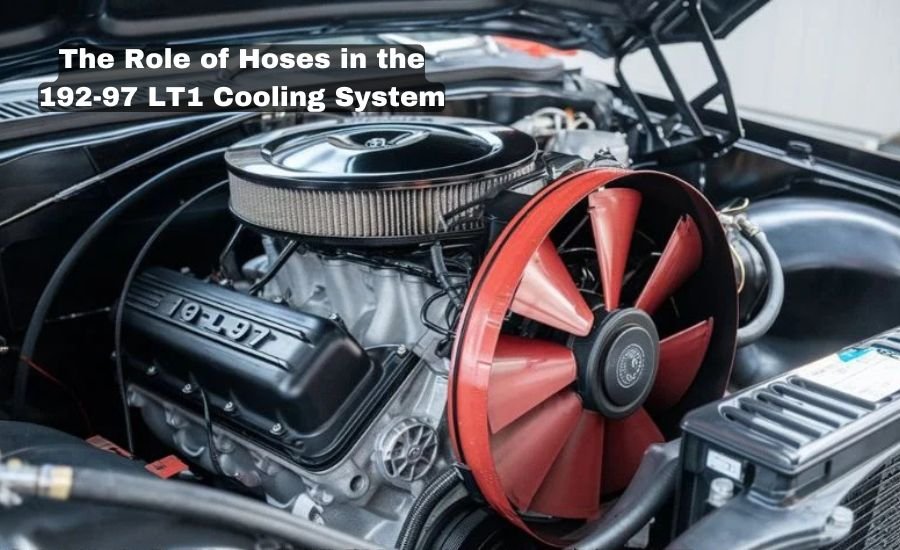
Hoses play a critical role in the 192-97 LT1 cooling system. They transport coolant to and from various engine parts, including the radiator and water pump. Over time, hoses can become brittle or break, causing leaks. Regularly inspecting hoses for wear and tear can help prevent coolant loss and overheating. If you find any damaged hoses, it’s important to replace them immediately.
The right hose connections also matter. Ensure that all hose clamps are tight and in good condition. Loose connections can lead to coolant leaks, which can damage the engine. Keeping your hoses in good shape is essential for maintaining an effective cooling system. By staying proactive about hose maintenance, you can avoid larger problems down the road.
Importance of Coolant Additives in the 192-97 LT1 Cooling System
Using coolant additives can greatly benefit your 192-97 LT1 cooling system. These additives can help prevent rust and corrosion within the system. They also improve heat transfer and can even boost the overall performance of the coolant. Adding these chemicals as recommended can help your engine stay cooler and run more efficiently.
However, it’s essential to choose the right additives for your specific coolant type. Mixing different types of coolant and additives can lead to problems. Be sure to consult your user manual for the best recommendations. By using the right additives, you can help extend the life of your cooling system and keep your engine in optimal condition. Proper care can make a big difference in your vehicle’s performance and longevity.
Conclusion
Taking care of your 192-97 LT1 cooling system is very important. This system helps keep your engine cool, so it doesn’t overheat. By regularly checking the coolant level, hoses, and radiator, you can make sure everything is working well. If you notice any leaks or problems, fixing them right away is key. Keeping everything in good shape will help your engine run smoothly for a long time. You want your car to last and perform its best, so don’t overlook this vital part.
Remember, a happy engine means a happy car! When your cooling system works well, you can enjoy driving without worrying about overheating. It’s like giving your car a glass of water! By following these easy tips, you’ll keep your 192-97 LT1 cooling system in top condition. This will help you have a safe and fun ride every time you get in your car. Taking small steps now can make a big difference later, so start checking your cooling system today, Plus, staying proactive will save you money on repairs and keep your vehicle running like new.
You Should Be Aware Of: Why-filtro-de-aire-k0r-tec1444-is-the-best-choice-for-clean-air-and-engine-health
FAQs
What is the purpose of the 192-97 LT1 cooling system?
The 192-97 LT1 cooling system keeps the engine from overheating and helps it run smoothly.
What are the main components of the 192-97 LT1 cooling system?
Key parts include the water pump, radiator, thermostat, and coolant. They work together to manage engine temperature.
How does the 192-97 LT1 cooling system differ from other systems?
The 192-97 LT1 cooling system has a reverse flow design, cooling the cylinder heads first for better performance.
What are common issues with the 192-97 LT1 cooling system?
Common problems include water pump failure, thermostat issues, and clogged radiators.
How often should I flush the 192-97 LT1 cooling system?
It’s best to flush the 192-97 LT1 cooling system every 30,000 miles or every 2 3 years.
What should I do if I notice coolant leaks in my 192-97 LT1 cooling system?
Check for damaged hoses or a faulty water pump if you see leaks, as they can lead to overheating.
Can I upgrade my 192-97 LT1 cooling system for better performance?
Yes, upgrading parts like the radiator or water pump can enhance the 192-97 LT1 cooling system.
How do I know if my 192-97 LT1 cooling system is working properly?
A stable engine temperature and no coolant leaks indicate that the 192-97 LT1 cooling system is functioning well.
What type of coolant should I use in my 192-97 LT1 cooling system?
Use the manufacturer recommended coolant for your 192-97 LT1 cooling system to ensure optimal performance.
Why is regular maintenance important for the 192-97 LT1 cooling system?
Regular maintenance helps prevent overheating and keeps the 192-97 LT1 cooling system running efficiently.





